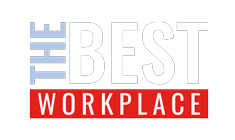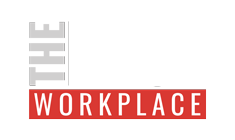In 2021, a leading global job site reported that roughly 52% of Americans suffer from burnout at work. With more than 300 million unique visitors to its website each month, Indeed.com should know. After all, a separate Gallup study indicated that employees suffering from burnout are 2.6 TIMES MORE LIKELY to explore new employment opportunities. As more and more employers struggle under the weight of the “Great Resignation” and “quiet quitting,” it’s imperative to get to the root of the matter before burnout becomes an issue at your organization.
What Causes Employee Burnout
That same Gallup study also identified the Top Five Factors that led to burnout among its respondents:
- Unfair treatment at work
- A heavy workload that’s challenging to manage
- Unclear communication from leaders
- Lack of support from management
- Unreasonable time frames
On the flip side of that coin, monotony from a lack of challenge or variation in one’s day-to-day duties may be another common factor in employee burnout. An additional dynamic that often leads to burnout is when an employee doesn’t feel valued because management seems disinterested in developing their careers further, creating the sense of a “dead-end job.”
How to Identify the Signs of Burnout
Now that we’ve put the root causes under the microscope, it’s important to become attuned to some of the warning signs that employee burnout might be an issue within your organization. Burnout causes stress and stress can impact one’s physical and mental well-being. 63% of Gallup respondents who indicated they experienced burnout “often” or “always” on the job were more likely to take a sick day. Another 23% indicated they were more likely to visit an emergency room. Pay particular attention to those employees who seem exhausted or unwell and check in on them regularly – especially when increased absenteeism is at play. Beyond the physical, pay attention to changes like a higher sensitivity to criticism or a noticeable emotional detachment from the rest of the team. Some signs may be far more subtle, such as disengagement or lack of interest in the job itself. The key here is to be aware of the changes in your employees. Burnout can cause a historically eager contributor to become disconnected and dissatisfied, and that’s a dangerous combination for any organization.
Best Ways to Address Burnout Internally
Once you become aware of changes in your employees’ attitudes toward their work and suspect that burnout may impact several members of your team, it might be time for a cultural shift. You can take simple steps on your own by creating an “open door” environment where employees feel safe to share what they are feeling – good or bad – without fear of retribution. You can also seek to foster a team atmosphere by taking teams out to lunch, celebrating successes with the occasional office party, and taking part in team-building exercises. You might look to give them a hybrid in-office/remote work schedule to demonstrate support for your employees’ work-life balance. If you’re not already doing so, other changes your team members may find beneficial include:
- Demonstrating empathy as opposed to frustration when they’re having a bad day
- Encouraging employees to take full advantage of vacation days
- Incorporating ways for team members to enjoy a little “downtime” while in the office, like video games, a ping pong table, a gym inside or walking trail outside the office, and more
- Finding creative ways to show your appreciation for an employee’s hard work, like a gift card, special award, or unexpected day off
- Allowing your employees to personalize their workspaces with things that will make them feel “at home” even while at work. Something as simple as a framed photo of their family members serves as a reminder of why they work so hard – to provide for the family they love.
Partnering with a Professional to Address Burnout
If you find that burnout is a systemic issue you are uncomfortable handling on your own OR you want to be proactive and ensure that burnout never becomes an issue among your team members, it may be time to tap the talents of a professional. Employees that feel harassed, verbally abused, or devalued are indicators that the problem may lie in your management team. A lack of effective leadership development could be to blame. The Best Workplace is an excellent resource for management training in Atlanta. We offer onsite training to make the transition from Better to BEST as seamless as possible for your managers and the company as a whole.
If you’re unable to pinpoint exactly where the problem might lie or you wish to take a more universal approach to stave off burnout in the future, our experienced consultants can become more immersed in your company culture. By doing so, we can conduct third-party employee surveys, identify and develop potential leaders who may have been previously overlooked, detect and repair stop gaps in organizational efficiency, and so much more. Whether an emerging or an established company, you’ll soon discover why The Best Workplace is rapidly becoming a premier provider of holistic organizational health, business development management, and leadership development in Atlanta.
To start a dialogue about freeing your employees of the burdens of burnout while fostering a well-oiled, highly efficient team, we encourage you to reach out to The Best Workplace at 678-667-1275 or 678-543-4164, email us at Hello@yuy.bve.mybluehost.me, or fill out our online contact form. To learn more about our capabilities and consultants, please visit www.TheBestWorkplace.com.
Sources:
Burnout at Work Is Affecting 52% of Americans | Psychology Today
https://www.gallup.com/workplace/282659/employee-burnout-perspective-paper.aspx


